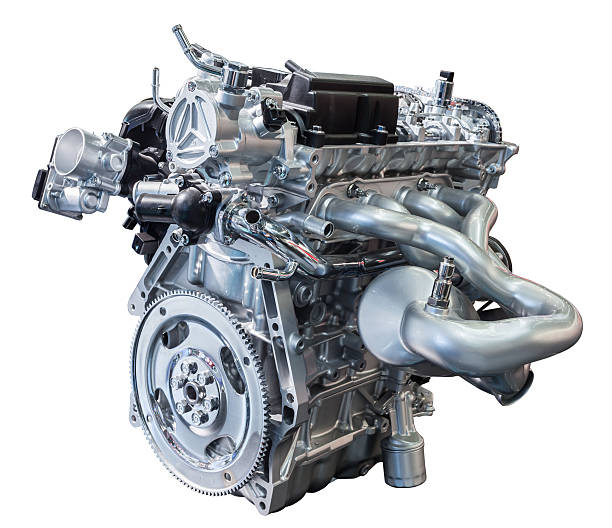The Hidden World of Vehicle Weight Distribution
Mastering the delicate balance of a car's weight is an art form that shapes the very essence of automotive performance. This often-overlooked aspect of vehicle design plays a crucial role in determining how a car handles, accelerates, and brakes. Today, we'll dive deep into the intricate world of vehicle weight distribution, exploring its profound impact on driving dynamics and the cutting-edge techniques manufacturers employ to perfect this automotive balancing act.

The physics behind weight distribution is rooted in the concept of center of gravity. A lower center of gravity typically results in better handling and stability, while a higher one can lead to increased body roll and potential rollover risk. Additionally, the longitudinal distribution of weight between the front and rear axles significantly influences a vehicle’s behavior during acceleration, braking, and cornering.
The Evolution of Weight Distribution Techniques
Historically, weight distribution was a byproduct of vehicle design rather than a primary focus. Early cars, with their front-mounted engines and rear-wheel drive layouts, often had a front-heavy bias. As automotive engineering advanced, manufacturers began to recognize the importance of balanced weight distribution.
The introduction of transaxle designs, where the transmission is integrated with the rear axle, was a significant step towards better weight distribution. This innovation, popularized by high-performance vehicles like the Porsche 928 and Ferrari 275 GTB, helped shift weight towards the rear, improving overall balance.
Modern Approaches to Achieving Optimal Balance
Today’s automotive engineers employ a variety of techniques to fine-tune weight distribution. One popular method is the use of a front-mid-engine layout, where the engine is positioned behind the front axle but ahead of the passenger compartment. This configuration, seen in vehicles like the BMW Z4 and Mercedes-AMG GT, helps centralize mass and improve handling characteristics.
Another innovative approach is the strategic use of lightweight materials. By utilizing materials like carbon fiber, aluminum, and high-strength steel in specific areas of the vehicle, engineers can shift weight distribution without necessarily changing the overall layout of components.
The Impact on Driving Dynamics
The effects of weight distribution on driving dynamics are profound and multifaceted. A well-balanced car offers more predictable handling, allowing drivers to navigate corners with greater confidence and control. During acceleration, proper weight distribution ensures optimal traction, particularly in rear-wheel-drive vehicles where weight transfer to the rear wheels can enhance grip.
Braking performance is also heavily influenced by weight distribution. A car with a front-heavy bias may experience more pronounced nose-dive under hard braking, potentially reducing overall stopping power and stability. Conversely, a well-balanced vehicle maintains more consistent contact between the tires and road surface during braking, leading to shorter stopping distances and improved control.
Beyond Performance: Efficiency and Safety
While performance is often the primary focus when discussing weight distribution, its impact extends far beyond lap times and cornering speeds. A well-balanced vehicle can contribute to improved fuel efficiency by reducing the energy required to change direction or speed. This efficiency gain is particularly notable in electric vehicles, where weight distribution plays a crucial role in maximizing range and battery performance.
From a safety perspective, optimal weight distribution contributes to vehicle stability in emergency maneuvers and adverse conditions. It can help mitigate the risk of rollovers and improve overall crash safety by influencing how energy is absorbed and dissipated during a collision.
The Future of Vehicle Weight Distribution
As we look to the future, the landscape of vehicle weight distribution is set to evolve dramatically. The shift towards electric powertrains presents both challenges and opportunities in this realm. The heavy battery packs in electric vehicles offer a unique chance to achieve near-perfect weight distribution by strategic placement within the vehicle’s structure.
Moreover, advancements in active weight distribution systems are on the horizon. These systems could dynamically shift vehicle weight in real-time, optimizing handling characteristics based on driving conditions and driver inputs. Such technology could revolutionize vehicle dynamics, offering unprecedented levels of control and performance.
In conclusion, the science and art of vehicle weight distribution represent a fascinating intersection of physics, engineering, and driving pleasure. As automotive technology continues to advance, this often-underappreciated aspect of vehicle design will undoubtedly play an increasingly crucial role in shaping the cars of tomorrow. Whether you’re a performance enthusiast or simply someone who appreciates the nuances of automotive engineering, understanding weight distribution offers a deeper appreciation for the complex dance of forces at play every time we take to the road.




